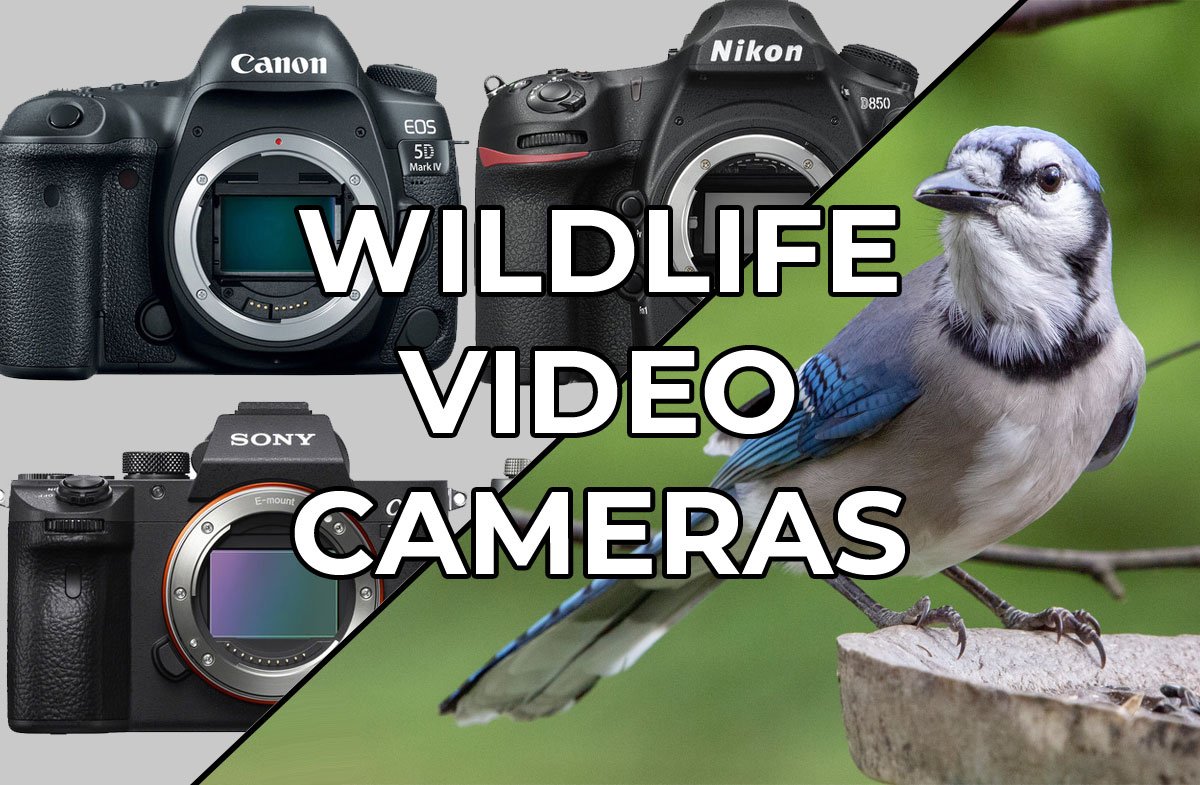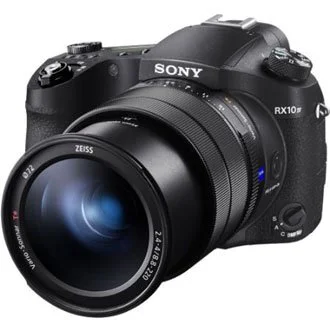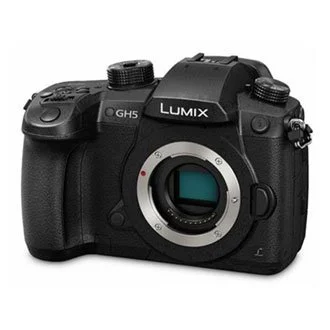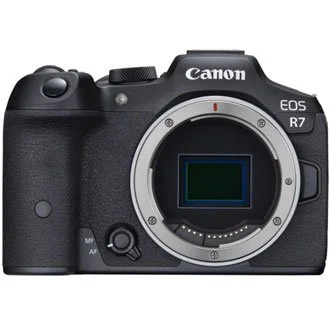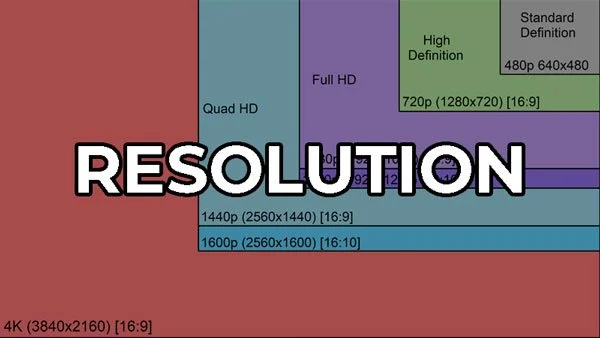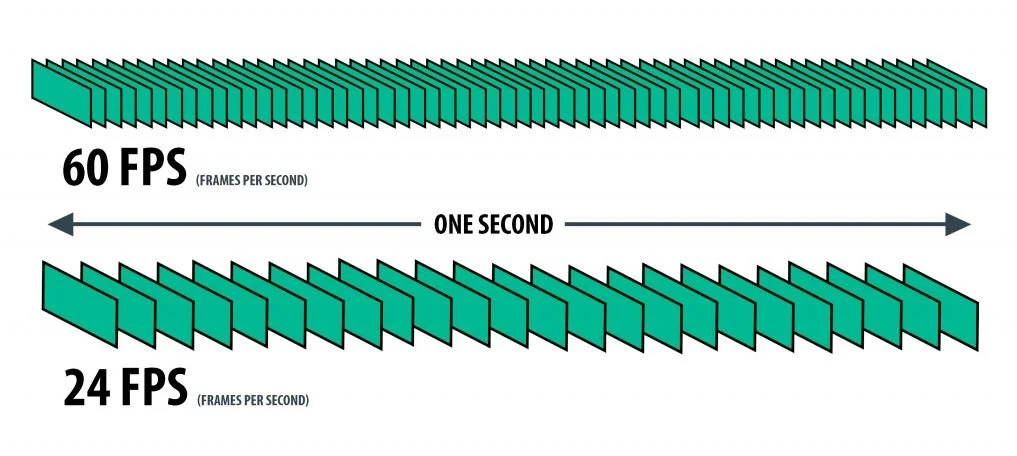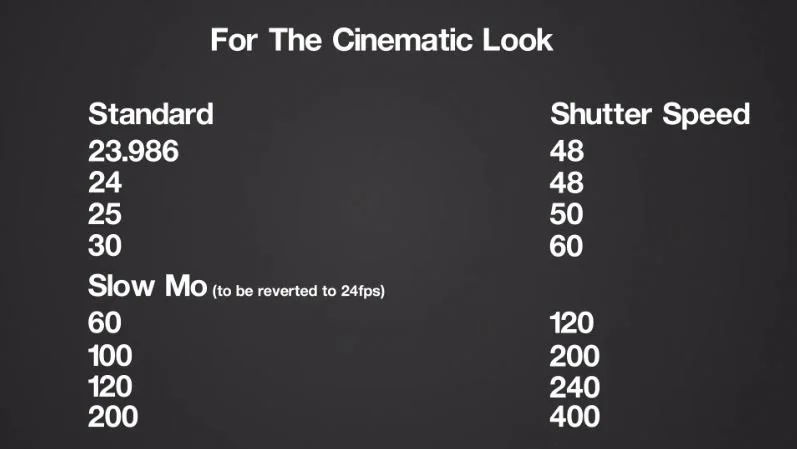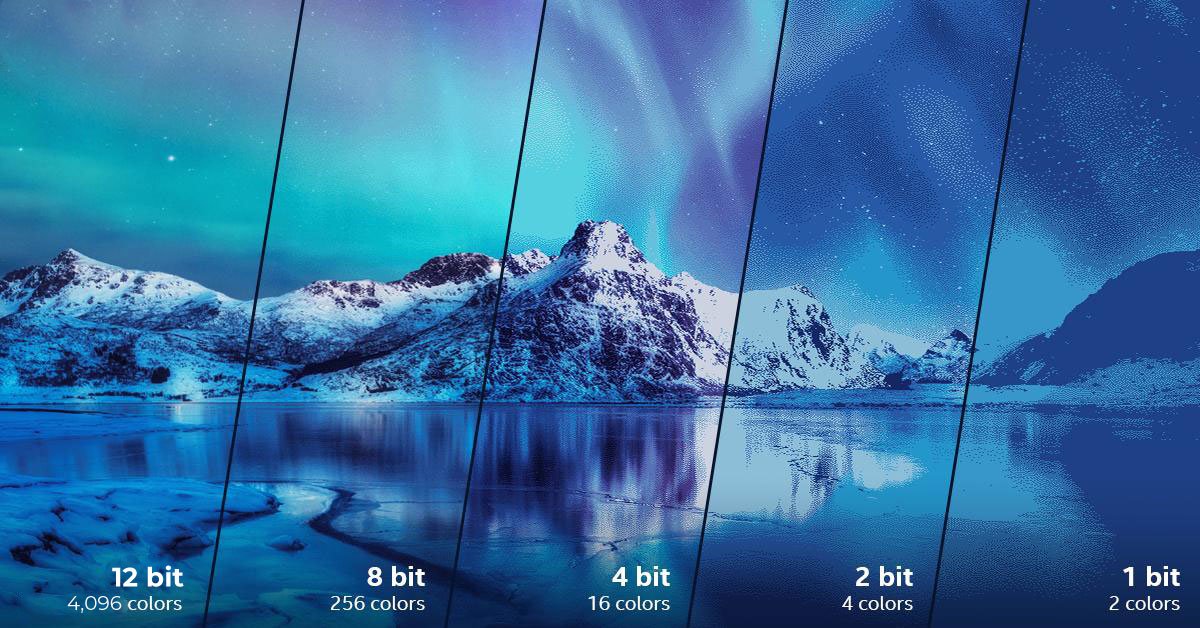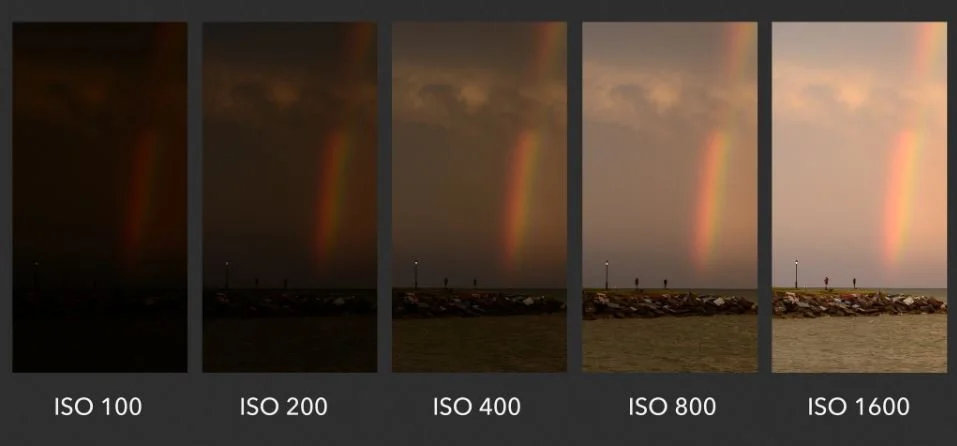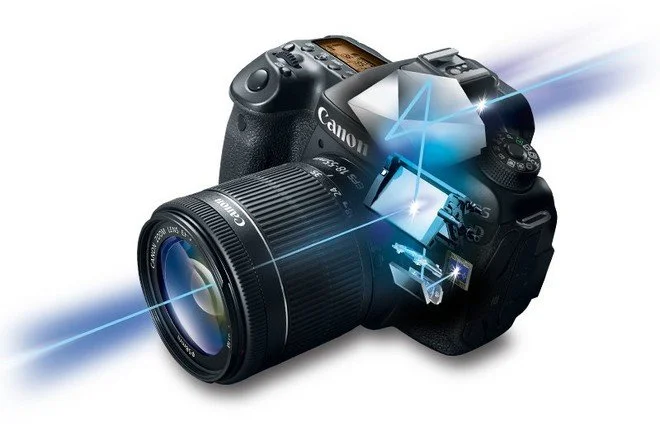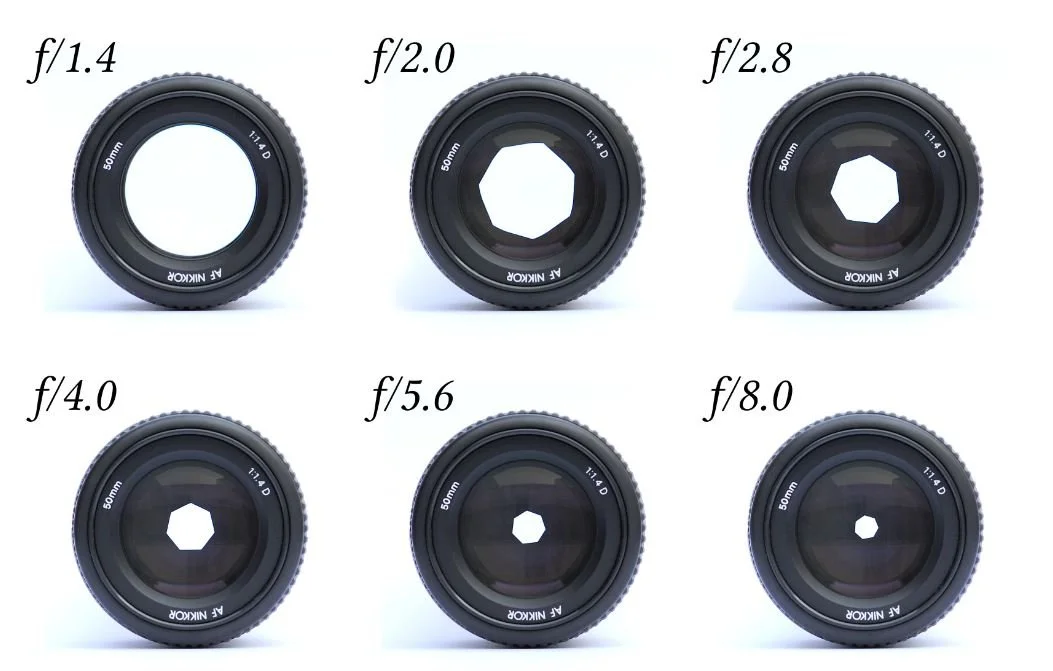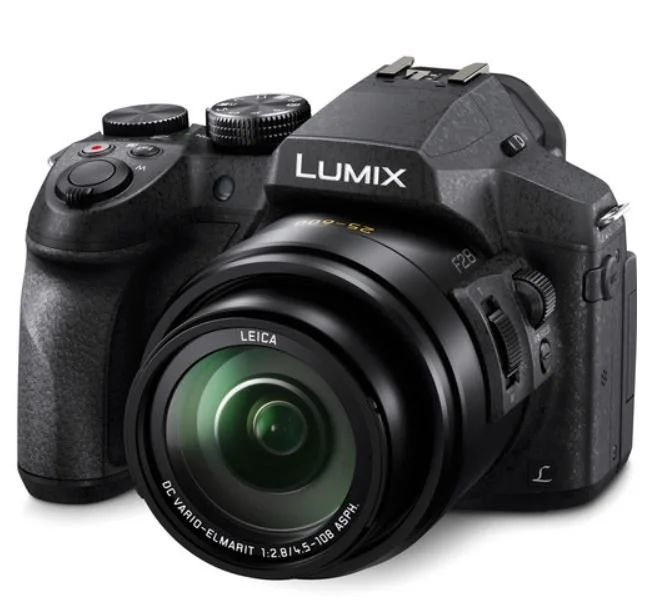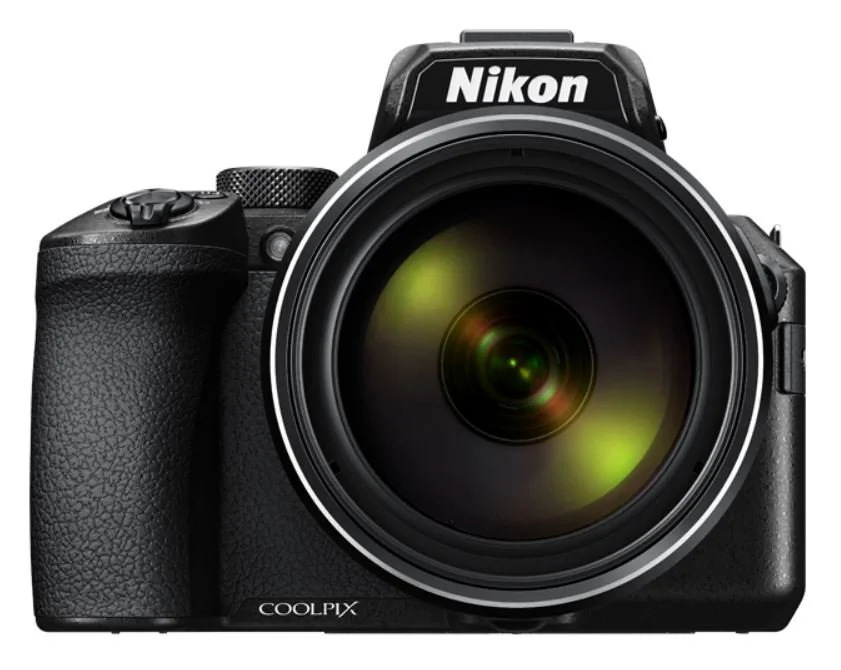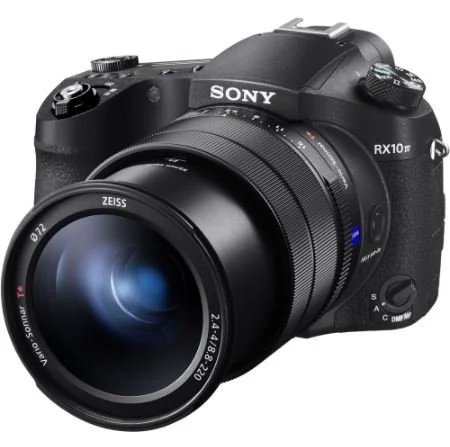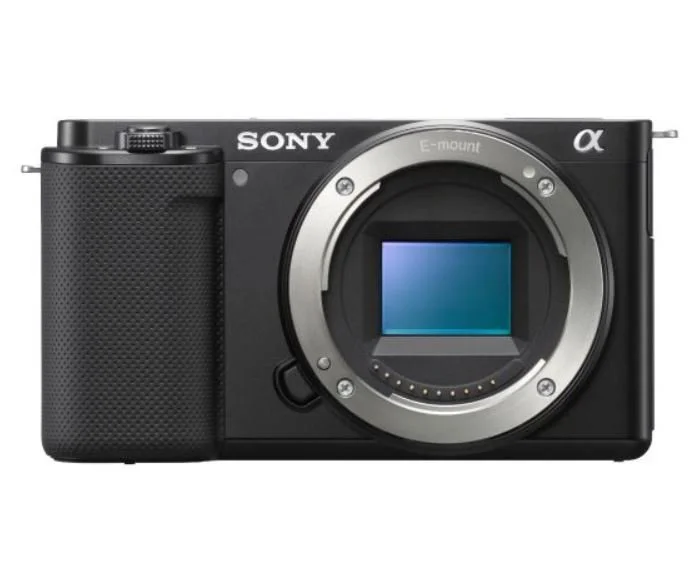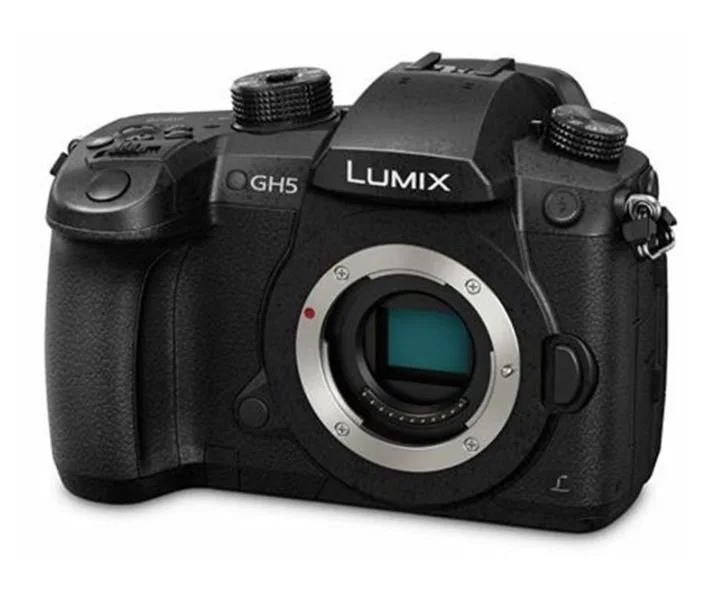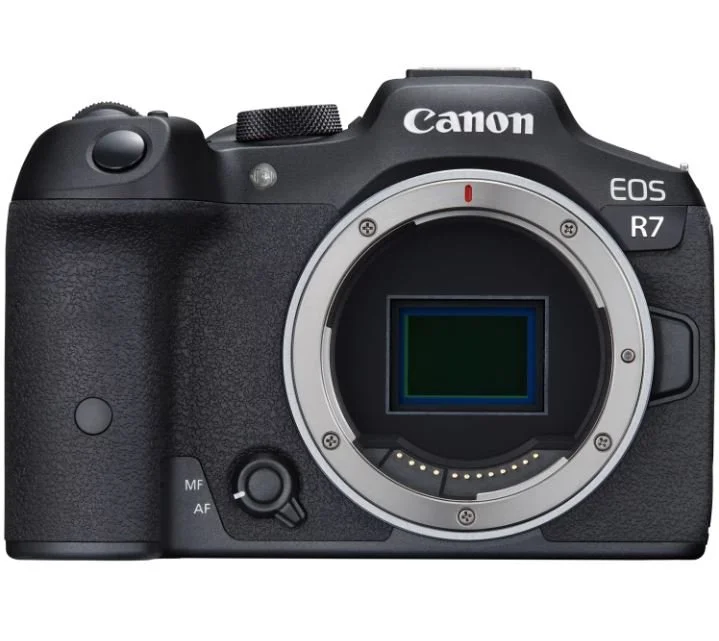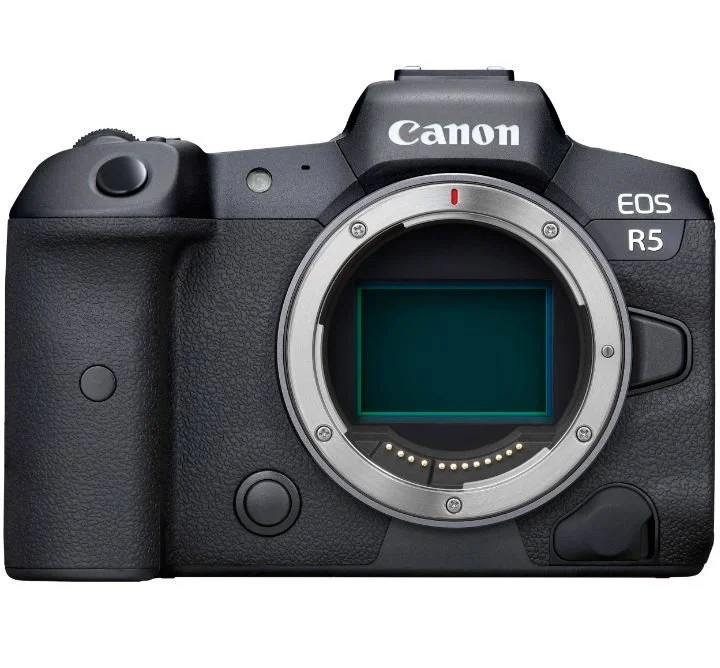Best Video Camera For Wildlife and Nature Filmmaking
Learn how to film wildlife, and what cameras and lenses are best for doing so in this informative article.
Filming wildlife up-close and personal can be an extremely rewarding and awe-inspiring experience.
With a good camera and a long lens, you can see nature in ways we simply can’t achieve with our own eyes.
In this in-depth post, you’ll learn video basics, terminology, and wildlife filming techniques so that you can choose the best video camera for wildlife with your unique needs and budget in mind, and capture those epic shots you’ve been dreaming of!
Best Video Camera for Wildlife (Quick Links)
Point & Shoot Cameras:
Despite point and shoot cameras being associated with beginners, they’ve come a long way with today’s technology and have become viable options for professional videography.
While they may take more skill, expertise, and planning to achieve stunning results, for the committed wildlife film maker, professional results are well within their reach.
Recommendations:
Best Budget: Panasonic Lumix DMC-FZ300
Good Value: Nikon COOLPIX P950
Best Overall: Sony RX10 IV
#1: Lumix FZ300
Pros
- Affordable
- Ultralight
- 25-600mm zoom
- Constant f/2.8 aperture
- 4K video
- Weather sealed
Cons
- 3MP video @600mm
- No slow-motion 4K video
The Panasonic FZ300 is a great camera for beginner wildlife videographers.
With pro features like constant f/2.8 aperture, weather sealing, image stabilization, and an impressive zoom lens, there’s a lot to like for its price.
However, because it uses digital magnification to achieve super telephoto focal lengths, at 600mm 4K video quality will be low resolution at only 3 megapixels, less than half of what is required for true 4K (8MP). Having said this, the video still looks pretty good at 600mm (watch above video).
#2: Nikon P950
Pros
- Lightweight
- 24-2000mm zoom
- 4K video
Cons
- No slow-motion 4K video
- Low resolution at max focal length
- Wide aperture not available at all focal lengths
The Nikon P950 offers incredible reach with its 2000mm lens.
With a dedicated “Bird Mode”, it’s great for beginners new to videography and photography alike.
However, like the Panasonic FZ300, the P950’s resolution is very low at 2000mm, but still has more than enough reach to fill the frame with wildlife at shorter (but still telephoto) focal lengths.
#3: Sony RX10iv
Pros
- Lightweight
- 24-600mm ZEISS lens
- 4K video
- Up to 1,000fps slow-motion in Full HD
- Weather sealed
- Advanced auto focus
Cons
- Expensive
- No slow-motion 4K video
Although point and shoot cameras are typically not considered professional, the Sony RX10 IV is the exception to this rule.
With a weather sealed body, 25-600mm ZEISS lens, 315-point phase-detection autofocus system, Log color space, and advanced video shooting tools, the RX10 IV is easily capable of professional looking wildlife footage.
Also, with more than enough megapixels for 4K video, the RX10 IV oversamples for 1.7x the amount of information required for true 4K footage, resulting in increased clarity while reducing the impact of moiré and aliasing.
Mirrorless Bodies:
Similar to photography, video camera bodies with interchangeable lens systems offer the best quality.
Though more costly than point & shoot cams, these bodies offer more advanced autofocus systems, enhanced color depth profiles, better image stabilization for handheld shooting, weather sealing, and more frame rate options, including slow motion.
Recommendations:
Best Budget; Sony ZVE10
Best Value: Panasonic GH5
Best Under $2000: Canon EOS R7
Best Under $4000: Canon EOS R5
#1: Sony ZV-E10
Pros
- Affordable Pro-Level Camera
- Ultralight
- 4K video
- 120fps slow-motion in Full HD
- Advanced auto focus
Cons
- Not weather sealed
- No slow-motion 4K video
For those wanting to invest in a pro level wildlife videography set up without spending a fortune, the Sony ZV-E10 is a great option.
The advanced autofocus system and extendable ISO range up to 51,200 will keep your subject in perfect focus even in low-light conditions. One of the few downsides is that the camera body is not weather sealed.
#2: Panasonic GH5
Pros
- Lightweight
- 10 bit 4K video
- 60fps slow-motion in 4K
- 180fps slow-motion in Full HD
- Weather sealed
Cons
- Log color space is additional purchase
The Panasonic GH5 is a professional work horse when it comes to video. It’s been trusted and loved by many professional filmmakers and when paired with a super telephoto lens, takes stunning footage of wildlife.
For the price, it’s a great balance between affordability and performance, especially with slow-motion 4K, super slow-mo 1080p, and dual internal image stabilization compensating for up to 5 stops of camera shake for handheld shots.
#3: Canon EOS R7
Pros
- Lightweight
- 10 bit 4K video
- 60fps slow-motion in 4K
- 120fps slow-motion in Full HD
- Renowned autofocus system
- Weather sealed
- Log color space
Cons
- Expensive
- Not a huge selection of native RF mount lenses
The Canon EOS R7 has one of the best autofocusing systems for wildlife.
With internal stabilization of up to 7 stops of camera shake, you may even be able to shoot some amazing footage handheld.
This feature, combined with the ultralight body make it an impressive video camera for wildlife.
#4: Canon EOS R5
Pros
- Lightweight
- Internal raw 8K video
- 120fps slow-motion in 4K
- Renowned autofocus system
- Weather sealed
- Log color space
Cons
- Expensive
- Not a huge selection of native RF mount lenses
The Canon EOS R7 is the best option available for wildlife videographers.
It’s lightweight, offers raw video output in 8K for maximum quality and post production creativity, and has one of the best autofocusing systems invented for animals.
Frequently Asked Questions
-
Shooting high quality wildlife videos is a factor of gear and technique.
For gear, you’ll need a video camera and a telephoto lens to get zoomed in details of your subject without scaring it away.
A 400mm lens is long enough to fill the frame with most wildlife species, including most songbirds.
However, lenses up to 800mm are used for filming more elusive and potentially dangerous wildlife.
-
Yes, GoPro cameras can be used as a wildlife camera.
However, due to the wide angle of their lenses, they’re best used as a game camera and set up to only record when there is motion within the frame.
This may allow for detailed, up-close shots of wildlife.
For more information on how to set up your GoPro to function as a game camera, please see this article.
-
The best camera for wildlife videography is the Canon EOS R5.
With a full frame sensor for maximum low light performance, renowned autofocusing system with deep learning for animal recognition and tracking, internal raw 10-bit 8K video up to 30fps, slow-motion 4K up to 120fps, weather sealed body, and lightweight design leaves little to want in a professional wildlife video camera.
-
Camcorders are primarily used to film wildlife documentaries.
Bigger and much heavier than normal cameras, camcorders are purpose-built for high quality video.
Camcorders used in wildlife documentaries are capable of super slow-mo at 4K, have more than 10 stops of dynamic range, and can record raw video internally.
Some of the top choices include:
-
Planet Earth was primarily filmed with two cameras:
Sony HDW-750 Camcorder with a Canon 400mm lens: primarily used for “on-the-ground” shots.
Sony HDC-950 with a Canon HJ40 400x lens: primarily used for aerial gimbal shots from an overhead plane.
Important Features To Consider
When shopping for the best camera for wildlife videography, you must consider camera and lens features to select the best options for your specific use and budget.
For this reason, I’ve split the learning objectives into two categories:
Camera Features
The best camera for wildlife videography is lightweight, has good low-light performance, good auto focus and focus tracking, a large image sensor, and can output high quality 4K footage for post production color grading.
In this section, you’ll learn about these important features in great detail so you can prioritize the features that are most important to you and select a camera within your budget.
Video Basics
If you are a beginner wildlife videographer or wildlife photographer wanting to get into video, it’s extremely important to understand the different video formats available to you.
Video formats can be broken down into four components:
Resolution
Frame Rate
Shutter Speed
Format
Bit Depth
After understanding these different aspects behind video quality, you’ll be able to determine what specifications you want to have in your camera. This will help you narrow down your search results and make the decision making process easier.
Resolution:
Most people are already familiar with video resolution, even if they don’t fully understand what they mean:
HD (720p)
Full HD (1080p)
4K Video (2160p)
8K Video (4320p)
Video resolution measures the number of pixels* an image has. The more pixels, the higher the quality
*Pixel: All digital photos and videos are made up of tiny squares of color information called pixels. Each pixel is a single color and together they combine like puzzle pieces to form the on-screen image.
Resolution detail comparison. Click for enlarged view.
Today, virtually all video cameras are capable of shooting Full HD (1080p) resolution.
Full HD is the most common resolution because it looks great on screens up to 55” (at normal viewing distances)!
The added detail benefits of higher resolutions like 4K and 8K do not become apparent unless viewed on a 70” screen at a viewing distance of 6’ from the screen (which is probably closer than you’d want to sit).
So unless you plan to view your work on a huge screen, 4K video is not required and Full HD resolution will be good enough.
For more information about video resolution, screen sizes, and viewing distances, please read this fantastic research article.
Higher video resolutions result in more detailed images.
However, for resolutions above Full HD (1080p), a very large screen is required to notice the extra details.
For this reason, recording in Full HD is best for most wildlife videographers. It looks the same as 4K on screens up to 55", uses less memory, and can be edited faster in post-production.
Frame Rate
Now that you know what video resolution is best for you, let’s learn about another important video setting: frame rate.
Videos are really a series of still images rapidly flashed across the screen to create the illusion of movement.
Each sill is called a “frame” and the number of frames shown per second is the frame rate.
Choosing a frame rate is important as it will dictate how your footage looks.
In conjunction with shutter speed (more on this later), frame rate determines how much detail is captured for an object in motion.
Common frame rates are listed below:
24fps - standard frame rate for movies and TV shows. Captures motion blur similar to how we actually see the world, resulting in realistic looking footage.
30fps - early standard for TV shows. Videos with a lot of motion, such as sports, benefit from the extra frames per second.
60+fps - frame rates of 60 or higher are used for slow-motion video. Most often used in sports to broadcast with high detail and later slow down for slow-motion replays.
For stationary wildlife, I recommend using a frame rate of 24fps. This captures good detail and adds realistic motion blur to any subtle movements.
Fast moving wildlife is extremely difficult to capture while keeping the subject in frame, but is done best with higher frame rates so you can slow down the motion in post-production and appreciate all the details.
Shutter Speed
Using the correct shutter speed is extremely important for capturing the look you’re after.
Similar to frame rates, a slower shutter speed will capture more motion blur, while a faster shutter speed captures more detail.
However, this does not mean that you should use the fastest shutter speed possible. Doing so without understanding how shutter speed and frame rate affect each other can cause your footage to look jerky and unnatural.
The 180° Rule:
Capturing video with the same level of motion blur we naturally see with our own eyes is often v.
Doing so will make your footage appear more realistic and pleasing to the eye.
To do so, you must follow what’s known as “The 180° Rule”.
The rule simply states that to achieve realistic motion blur, set your shutter speed to double your frame rate.
The 180° Rule is illustrated below for several common frame rates:
24fps = 1/48 shutter speed
30fps = 1/60 shutter speed
60fps = 1/120 shutter speed
Format
Video format determines how a video file is saved.
The format you choose to record in will determine how much the file is compressed and the level of detail saved (or lost).
The three most popular video formats are as follows:
Uncompressed Raw - saves the maximum amount of detail possible; basically is a raw photograph for every frame. Due to the massive file sizes of this format, almost no one uses uncompressed raw format.
Compressed Raw - saves slightly less detail than uncompressed raw while still maintaining the ability for massive adjustments in post-production including: noise, white balance, and color space. Very few cameras offer in-camera compressed raw format and require an external monitor to output this format.
Log - good balance between preserved detail and file size. One of the most popular video formats. Still allows for large, post-production adjustments.
If your camera does not offer one of the above three formats, do not worry. Most cameras have a color space mode you can apply to your footage to preserve detail and maximize creative adjustments in post-production.
If you don’t want to fuss with color grading your footage after filming, simply film in “Standard”, “Natural”, or “Vivid” color mode and call it a day.
Bit Depth
Bit depth determines the total number of colors a single pixel can be.
The greater the bit depth, the more accurately subtle differences in color will be rendered in your videos.
This is most noticeable in color gradients, especially in the sky, but also where light is reflected on your subject, like bird feathers.
Color gradients smoothly transition from one color to another and encompass a vast number of color shades. Lower bit depths will not be able to render this correctly and banding* will occur.
Video camera offer three common bit depth settings:
8 bit - 256 possible shades for each primary color for a total of ≈ 16.7 million different colors.
10 bit - 1,024 possible shades ≈ 1.07 billion different colors.
12 bit - 4,096 possible shades ≈ 68 billion different colors.
For wildlife videography, 8 bit color depth will suffice most of the time but increasing to 10 bit is worth the larger file size.
10 bit video is only 20% larger in file size than 8 bit but gives four times the color possibilities resulting in smoother gradients and more accurate depictions of your subject.
Higher bit depths result in smoother color gradients, especially in the sky and reflected light on bird feathers etc.
For wildlife videography, 10 bit color depth is a good balance between possible colors for each pixel and file size.
Weight
With a solid understanding of video, let’s learn about the next most important camera feature when it comes to wildlife videography: weight.
As a wildlife videographer, you will likely spend many miles on trails and possibly even bushwhacking through wilderness.
If you’re looking for a rare species, you may even be backpacking and spending multiple nights out in pursuit of your subject.
Even if you’re just out on a casual day trip, all wildlife videographers will benefit from a lightweight camera body.
You’ll be able to travel further, faster, and carry additional gear with you such as a tripod, microphones, food, and camping equipment.
Trust me, as someone who does this professionally, I have never looked back after swapping my heavy Nikon D800 for the mirrorless Panasonic GH5.
ISO Performance
A camera’s ISO setting changes how sensitive it is to light digitally.
Increasing the ISO setting will make your video brighter.
This is especially useful when recording during dawn and dusk when available natural light is low.
However, increasing the ISO should only be done as a last resort; since it can add noise* to your video.
*Noise is a visual distortion that most often looks similar to grain found in film photography, but can also appear as splotches of discoloration when it’s really bad. The higher the ISO setting, the more exaggerated the distortion.
If you cannot get a properly exposed image by changing your shutter speed and aperture, increase the ISO.
However, all cameras offer different ranges of ISO settings and some are better than others.
If you plan to do a lot of shooting during periods of low light, ISO will be especially important to you and I recommend you research potential cameras and look at what their images look like at different ISO settings.
In doing so, you’ll learn the maximum ISO setting available to that camera that still produced usable results.
Auto Focus
Auto Focus and focus tracking are helpful for maintaining sharp focus of subjects in motion.
While all modern cameras offer some form of autofocus, some are better than others and some models even offer wildlife autofocus specific focusing modes.
Generally speaking, a ranking of the best auto focusing systems by manufacturer are listed below:
Sony
Canon
Nikon
Panasonic
Fujifilm
Take these rankings with a grain of salt because auto focusing systems are unique to each camera and some models simply outperform others, regardless of manufacturer.
Lens Features
By itself, a camera cannot capture video. For that, a lens is required.
When choosing a lens for wildlife videography, the following features are of particular importance:
Focal Length
Out of the three important features to consider, focal length is arguably the most important when it comes to filming wildlife video.
Focal length measures the angle of view (how much of the scene will be captured) and the magnification (how large individual elements will appear).
The longer the focal length, the narrower the angle of view and the higher the magnification. The shorter the focal length, the wider the angle of view and the lower the magnification.
This effect is depicted below:
For most wildlife videography, a 400mm lens is a nice sweet spot.
400mm is a good balance between price, weight, and magnification. It is great for wildlife that are relatively easy to approach without scaring off, which includes most species of songbirds.
For more elusive and/or dangerous animals, a longer focal length is recommended for the safety of yourself and the wildlife.
Zoom Vs. Prime
If you’ve spent any time looking at camera lenses, you’ll know that they’re available in zoom and prime formats.
Zoom lenses cover a range of focal lengths, while a prime lens has only one.
For example, the Canon 100-400mm Mark II is a fantastic wildlife zoom lens, while the Canon EF 400mm IS III is a great prime lens.
For wildlife videography, I recommend using a zoom lens for the following reasons:
Zoom lenses make finding your subject easier. You can acquire your species while zoomed out, and then zoom in until it fills the frame. Finding your subject with a prime lens can be difficult because it’s so zoomed in.
Zoom lenses allow great levels of flexibility in composing your scene. If all of your subject is not in the frame at the maximum focal length, simply zoom out a little. With a prime lens, you would have to physically move your setup backwards to get the full subject in view.
Conversely, prime lenses are lighter and have wider apertures, allowing for more light to enter the camera. With their wider apertures, the background will also be more blurred, which can be more pleasing and help isolate your subject from its background, but as depth of field becomes increasingly shallow the longer the focal length, there will be little difference in the bokeh of a prime vs. an equivalent zoom lens.
Aperture
The aperture of a lens measures the size of the opening at the end of a lens through which light travels through.
Apertures are measured in f/stops with smaller numbers indicating a larger (or wider) aperture.
Lenses with small f/stop numbers like f/2.8 are great for shooting in low light as the wide opening allows more light to pass through, resulting in a brighter image.
However, lenses with wide apertures are expensive and are not necessary for stunning results.
If you’re between lenses with different apertures and all other aspects the same, go with the lens with the wider aperture if it’s within your budget.
Weight
Choosing a lightweight camera body is important partially because of how heavy wildlife lenses tend to be.
On average, a 400mm zoom lens will weigh between 3-4lbs!
There’s not much getting around the weight of long focal length lenses, so if weight is a concern for you, be sure to go with the lightest camera body that still meets your shooting needs.
Best Video Camera for Wildlife
The best cameras for wildlife videography are lightweight, support multiple 4K frame rates (including slow motion), have autofocusing systems designed for wildlife, can internally record 10-bit video, and are weather sealed.
Having all of these features can cost a pretty penny, but I’ve researched viable options for many different budgets, including the best of the best.
Camera recommendations are split into two categories:
Point and Shoot Cameras - good for beginners and those on budgets with professional results still attainable.
Mirrorless Bodies - built for professionals who demand the utmost of their gear.
Best Point & Shoot Video Camera Bodies for Wildlife
Despite point and shoot cameras being associated with beginners, they’ve come a long way with today’s technology and have become viable options for professional videography.
While they may take more skill, expertise, and planning to achieve stunning results, for the committed wildlife film maker, professional results are well within their reach.
Recommendations:
Best Budget: Panasonic Lumix DMC-FZ300
Good Value: Nikon COOLPIX P950
Best Overall: Sony RX10 IV
Best Budget Point and Shoot
The Panasonic Lumix DMC-FZ300 offers great value to wildlife videographers on a serious budget.
For under $500, the FZ300 packs an impressive zoom lens covering focal lengths from wide angle 25mm to super telephoto 600mm, with a constant f/2.8 aperture, allowing for maximum light during dawn and dusk shooting at any focal length.
For video, the FZ300 is capable of 4K at 24p or 30p frame rates at 100Mbps in 8 bit color depth.
Slow motion video is also available when shooting at 1080p at 60fps.
A nice-to-have feature, especially at this price point is weather sealing. The FZ300 is sealed at each joint, button, and dial, rendering it splash and dust proof.
Besides being a great video camera, the FZ300 is also quite capable for photography with 12.1 megapixels, 5-axis optical image stabilization for handheld use, dedicated macro mode for focusing as close as 1cm, 3” articulating LCD touchscreen, and Starlight auto focusing mode for maintaining sharp focus even when things get dark.
Real World Results:
Bottom Line: The Panasonic FZ300 is a great camera for beginner wildlife videographers. With pro features like constant f/2.8 aperture, weather sealing, image stabilization, and an impressive zoom lens, there’s a lot to like for its price. However, because it uses digital magnification to achieve super telephoto focal lengths, at 600mm 4K video quality will be low resolution at only 3 megapixels, less than half of what is required for true 4K (8MP). Having said this, the video still looks pretty good at 600mm (watch above video).
Pros
- Affordable
- Ultralight
- 25-600mm zoom
- Constant f/2.8 aperture
- 4K video
- Weather sealed
Cons
- 3MP video @600mm
- No slow-motion 4K video
Best Value Point and Shoot
The Nikon COOLPIX P950 is the best value video camera for filming wildlife.
Boasting a zoom lens from 25mm to a whopping 2000mm, the P950 is one of the longest reaching point and shoot cameras, bested only by the Nikon P1000, with a focal length of 3000mm.
However, due to poor resolution at maximum photo length, the extra $200 for the P1000 is not worth it (for video).
Similar to the Panasonic FZ300, the P950 is capable of 4K video at 25p and 30p frame rates, as well as slow-motion video at 1080p (60fps).
The P950 also has an internal timelapse mode with five different interval settings.
For beginners, the P950 offers a “Bird Mode” setting for automatic control over exposure settings for best results. For experienced users, manual mode is available.
Real World Results:
Bottom Line: The Nikon P950 offers incredible reach with its 2000mm lens. With a dedicated “Bird Mode”, it’s great for beginners new to videography and photography alike. However, like the Panasonic FZ300, the P950’s resolution is very low at 2000mm, but still has more than enough reach to fill the frame with wildlife at shorter (but still telephoto) focal lengths.
Pros
- Lightweight
- 24-2000mm zoom
- 4K video
Cons
- No slow-motion 4K video
- Low resolution at max focal length
- Wide aperture not available at all focal lengths
Best Overall Point and Shoot
The Sony RX10 IV is the best overall point and shoot video camera for wildlife videography.
With a professional ZEISS lens covering focal lengths from 24-600mm, image quality is incredibly sharp. Also, aperture only is limited to f/4 @600mm, allowing for good light exposure when working in low-light conditions.
In comparison to the FZ300 and the P950, the RX10 IV has vastly improved autofocus, image stabilization, videography tools, and extensive support for slow motion videos.
Speaking of video, the RX10 IV can shoot 4K at 24p and 30fps, as well as slow-motion Full HD up to 1,000fps!
Additionally, the RX10IV features advanced video tools such as timecode, zebras, peaking, and Log color space for maximum potential while color grading footage in post-production..
The magnesium alloy body is weather sealed against dust and water.
Bottom Line: Although point and shoot cameras are typically not considered professional, the Sony RX10 IV is the exception to this rule. With a weather sealed body, 25-600mm ZEISS lens, 315-point phase-detection autofocus system, Log color space, and advanced video shooting tools, the RX10 IV is easily capable of professional looking wildlife footage.
Also, with more than enough megapixels for 4K video, the RX10 IV oversamples for 1.7x the amount of information required for true 4K footage, resulting in increased clarity while reducing the impact of moiré and aliasing.
Pros
- Lightweight
- 24-600mm ZEISS lens
- 4K video
- Up to 1,000fps slow-motion in Full HD
- Weather sealed
- Advanced auto focus
Cons
- Expensive
- No slow-motion 4K video
Best Video Camera Bodies for Wildlife
Similar to photography, video camera bodies with interchangeable lens systems offer the best quality.
Though more costly than point & shoot cams, these bodies offer more advanced autofocus systems, enhanced color depth profiles, better image stabilization for handheld shooting, weather sealing, and more frame rate options, including slow motion.
Recommendations:
Best Budget; Sony ZVE10
Best Value: Panasonic GH5
Best Under $2000: Canon EOS R7
Best Under $4000: Canon EOS R5
Best Budget Body
The Sony ZV-E10 is the best budget camera body for wildlife video.
Though marketed as a vlogging camera, the ZV-E10 has many pro-level features that when combined with a super telephoto lens, transforms it into a professional, low budget option for cinematic wildlife video.
Pro-level features include:
3-capsule microphone with included wind protection
51,200 ISO for low light conditions
425-point Fast Hybrid AF system with animal eye detection and tracking
Log color space video
Full HD slow-motion up to 120fps
4K video is available for 24p, 25p, and 30p frame rates with 8 bit color depth.
Lens Recommendations:
$: Tamron 70-300mm f/4.5-6.3 Di III RXD Lens (see real world video with comparable Tamron lens below)
Real World Results ZV-E10 w/Tamron Lens:
Bottom Line: For those wanting to invest in a pro level wildlife videography set up without spending a fortune, the Sony ZV-E10 is a great option. The advanced autofocus system and extendable ISO range up to 51,200 will keep your subject in perfect focus even in low-light conditions. One of the few downsides is that the camera body is not weather sealed.
Pros
- Affordable Pro-Level Camera
- Ultralight
- 4K video
- 120fps slow-motion in Full HD
- Advanced auto focus
Cons
- Not weather sealed
- No slow-motion 4K video
Best Value Body
The Panasonic GH5 was, and still is an indie filmmaker’s dream. It’s affordable and packed with pro-level features perfect for capturing cinematic quality footage. When paired with a super telephoto lens, the GH5 becomes an incredible rig for wildlife videography.
This is the camera I personally use and absolutely love.
The GH5 is the first video camera on this list offering 10-bit 4K video and slow-motion 4K video at 60fps.
These two flagship features combined give you immense creative control when color grading and for true 4K slow-mo.
The GH5 can also shoot Full HD slow-motion up to 180fps.
What’s more, the GH5 is one of the few cameras that can internally record compressed raw video at 4:2:2. Most cameras (at this price range and above) require an external recorder connected to the HDMI port to record at this quality.
Featuring a weather sealed body that’s also freeze proof, along with dual SD card slots, the GH5 is built to withstand the elements for all day shooting.
Log color space is available via separate purchase, but the GH5 natively supports Cinelike color space modes for flexibility during post-production.
The autofocusing system is quite good with 225 focus points and an advanced focus lock mode to follow your subject with tack-sharp focus as it moves throughout the frame.
Recommended Lenses:
Being a micro four thirds camera, lenses on the GH5 will reach further than their specified focal length. For example, a 200mm lens on the GH5 is equivalent to a 400mm lens. For this reason, the lenses I recommend below are all close to the 400mm equivalent sweet spot for most wildlife.
$$$: Leica DG Vario-Elmar 100-400mm f/4-6.3 (see this lens in action on a GH5 here)
Bottom Line: The Panasonic GH5 is a professional work horse when it comes to video. It’s been trusted and loved by many professional filmmakers and when paired with a super telephoto lens, takes stunning footage of wildlife.
Pros
- Lightweight
- 10 bit 4K video
- 60fps slow-motion in 4K
- 180fps slow-motion in Full HD
- Weather sealed
Cons
- Log color space is additional purchase
Best Body Under $2000
For less than $2000, the Canon EOS R7 is the best mirrorless camera for video out there.
Featuring:
4K video up to 60fps with oversampling for improved sharpness, reduced moiré, and lower noise
internal 4:2:2 10 bit color depth
Log color space
renowned Dual Pixel CMOS AF II focusing system with 651 automatic AF points, known for its ability to recognize and track wildlife, even in low light
weather sealed magnesium alloy body
extendable ISO range up to 51200
stereo internal microphone
ultralight
Recommended Lenses:
Being an APS-C sensor camera, focal lengths on the EOS R7 will appear 1.62x longer than their specification. For example, a 247mm lens will really look like 400mm. Below are some lenses near the sweet spot focal length of 400mm for most wildlife.
$$: Canon RF 24-240mm f/4-6.3 (view this lens on a Canon EOS RP here)
$$$: Canon RF 100-500mm f/4.5-7.1 (view this lens on a Canon EOS R5 here)
Bottom Line: The Canon EOS R7 has one of the best autofocusing systems for wildlife. With internal stabilization of up to 7 stops of camera shake, you may even be able to shoot some amazing footage handheld. This feature, combined with the ultralight body make it an impressive video camera for wildlife.
Pros
- Lightweight
- 10 bit 4K video
- 60fps slow-motion in 4K
- 120fps slow-motion in Full HD
- Renowned autofocus system
- Weather sealed
- Log color space
Cons
- Expensive
- Not a huge selection of native RF mount lenses
Best Body Under $4000
With a budget around $4000, the Canon EOS R5 is the best video camera out there.
Flagship features include:
internal raw, 12 bit 8K video up to 30fps
compressed raw (4:2:2) 10 bit 4K video up to 120fps
compressed raw (4:2:2) 20 bit Full HD video up to 120fps
full frame sensor for maximum performance in low light
1053 point autofocus system with deep learning for animal recognition and tracking
Log color space
internal stabilization compensates for up to 8 stops of camera shake
Additionally, the R5 is fully weather sealed, lightweight for a full frame camera, video ISO range from 100-51,200, and a shutter burst speed of 20fps for 3 seconds for photography.
Recommended Lenses:
Being a full frame camera, focal lengths will appear true to their specification on the EOS R7.
$$: Canon RF 24-240mm f/4-6.3 (view this lens on a Canon EOS RP here)
$$$: Canon RF 100-500mm f/4.5-7.1 (view this lens on a Canon EOS R5 here)
Bottom Line: The Canon EOS R7 is the best option available for wildlife videographers. It’s lightweight, offers raw video output in 8K for maximum quality and post production creativity, and has one of the best autofocusing systems invented for animals.
Pros
- Lightweight
- Internal raw 8K video
- 120fps slow-motion in 4K
- Renowned autofocus system
- Weather sealed
- Log color space
Cons
- Expensive
- Not a huge selection of native RF mount lenses
Support Acoustic Nature
If you enjoyed this post and would like to help support Acoustic Nature, please consider "buying me a coffee" or becoming a Patreon with the buttons below.
As a thank you for your support, Patreon supporters receive a copy of Field Recording For Beginners, exclusive access to the full Behind The Sounds video series, nature sound library downloads, and more.
If you are unable to support the site financially, please share this post with others, or leave a comment below letting me know you enjoyed this post! Both are free and help the website grow. Thank you ♫
Thanks for reading,
-Jared

